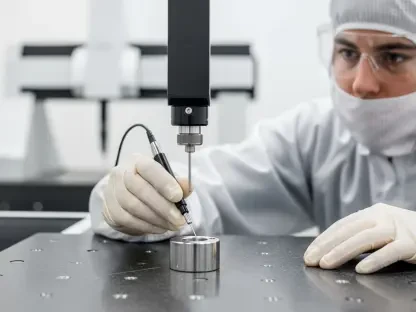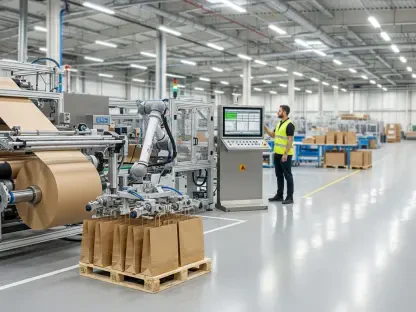Could a single piece of legislation unlock billions in capital for industrial businesses struggling to modernize? In the heart of America’s manufacturing hubs, companies are grappling with outdated machinery, tight budgets, and global competition, but a transformative bill known as the One Big Beautiful Bill Act (OBBB Act) is changing the game by offering unprecedented tax incentives and financing options. This isn’t just policy—it’s a potential turning point for small and mid-sized enterprises aiming to scale up and stay competitive. Dive into how this landmark legislation is reshaping the industrial landscape.
Why This Bill Is a Game-Changer for Industry
The OBBB Act isn’t merely another piece of legislation; it’s a lifeline for an industrial sector battered by economic uncertainty and supply chain chaos. Enacted to spur domestic growth, the bill directly tackles the financial barriers that have long hindered equipment upgrades and facility expansions. Its importance lies in empowering businesses to invest now, rather than deferring critical decisions due to cash flow constraints. With global pressures mounting to bring manufacturing back home, this act arrives as a critical tool for revitalizing American industry.
Beyond immediate relief, the significance of this bill extends to leveling the competitive field. Small and mid-sized firms, often outpaced by larger corporations with deeper pockets, now have access to tax benefits that can transform their operational capacity. The ripple effect could mean thousands of jobs, increased production, and a stronger domestic economy. Understanding its impact is essential for any industrial player navigating today’s volatile market.
Unpacking the Financial Power of Key Provisions
At the core of the OBBB Act are provisions designed to fuel industrial investment with immediate tax relief. The enhanced Section 179 expensing, for instance, raises the deduction limit for equipment purchases to $2.5 million, allowing full write-offs in the year of acquisition. This means a manufacturer can buy a new production line and slash taxable income instantly, preserving cash for other priorities.
Equally impactful is the Qualified Production Property deduction, which lets businesses expense 100% of the cost of new manufacturing facilities in the year they become operational. Unlike the previous decades-long amortization, this provision accelerates returns on major capital projects. When paired with restored 100% bonus depreciation for costs beyond Section 179 limits, companies can fully deduct multimillion-dollar investments in a single fiscal cycle.
Additional measures, like full R&D expense deductions and sector-specific credits such as the 20% Qualified Business Income deduction for pass-through entities, further sweeten the deal. Industries like construction and HVAC stand to gain significantly, freeing up capital for reinvestment. According to estimates from the U.S. Small Business Administration, equipment investments among smaller firms could surge by 15% due to these incentives, signaling a robust boost to industrial growth.
Real Stories from the Factory Floor
Across manufacturing hubs, the OBBB Act is already making waves, as evidenced by voices from the industry itself. A plant manager from a mid-sized Ohio factory shared, “Thanks to the new deduction limits, we’ve upgraded our entire assembly line without breaking the bank. It’s like getting a financial reset.” Such firsthand accounts highlight how the bill translates into tangible outcomes for businesses on the ground.
Tax experts are equally vocal about its potential. A senior consultant at a national advisory firm remarked, “This legislation gives smaller players the same firepower as big corporations to invest aggressively. It’s a rare equalizer in today’s market.” These perspectives, coupled with data projecting significant upticks in capital spending, paint a picture of an industry poised for renewal. From shop floors to boardrooms, the consensus is that this act is sparking a wave of modernization.
Navigating Challenges in a Shifting Landscape
Despite its promise, leveraging the OBBB Act isn’t without hurdles. Economic volatility and supply chain disruptions continue to complicate investment decisions, even with generous tax breaks. Businesses must also contend with time-sensitive provisions, such as the Qualified Production Property deadline set for January 2031, which demands swift planning to maximize benefits.
Another layer of complexity arises from technological obsolescence. With rapid advancements in automation and machinery, some firms hesitate to commit to purchases that might soon be outdated. Leasing, now on par with buying due to balanced tax incentives, emerges as a flexible alternative for those wary of long-term risks. Navigating these challenges requires a blend of strategic foresight and collaboration with financial advisors to align investments with market realities.
Strategies to Turn Policy into Profit
For industrial businesses ready to capitalize on the OBBB Act, actionable steps can transform policy into a competitive edge. Start by auditing current equipment and facility needs to pinpoint investments eligible for immediate deductions under Section 179 or bonus depreciation. Prioritizing projects that can be executed within tight windows ensures maximum tax relief.
Partnering with lenders and tax professionals is also key to crafting a holistic strategy. Combining multiple deductions—such as pairing equipment write-offs with facility expensing—can amplify savings in a single year. For sectors like landscaping or electrical services, tapping into specific credits like the Qualified Business Income deduction can unlock additional capital. Meanwhile, firms focused on innovation should expedite R&D projects to benefit from full expense write-offs, driving modernization without budget strain.
Reflecting on a Transformative Shift
Looking back, the rollout of the OBBB Act marked a pivotal moment for industrial businesses across America. It redefined how companies approached growth, breaking down financial barriers that once stifled progress. The stories of factories upgrading overnight and the insights of experts underscored a shared belief in its potential to reshape the sector. For those who acted swiftly, the benefits were clear: stronger cash flows, modernized operations, and a renewed ability to compete.
Moving forward, the challenge became one of sustained momentum. Businesses had to continue aligning their strategies with evolving economic conditions, ensuring that investments made under this act yielded long-term value. Collaboration with financial partners remained crucial to navigating future uncertainties. Above all, the lesson was evident—seizing legislative opportunities with bold, informed action could position any industrial firm for enduring success.









